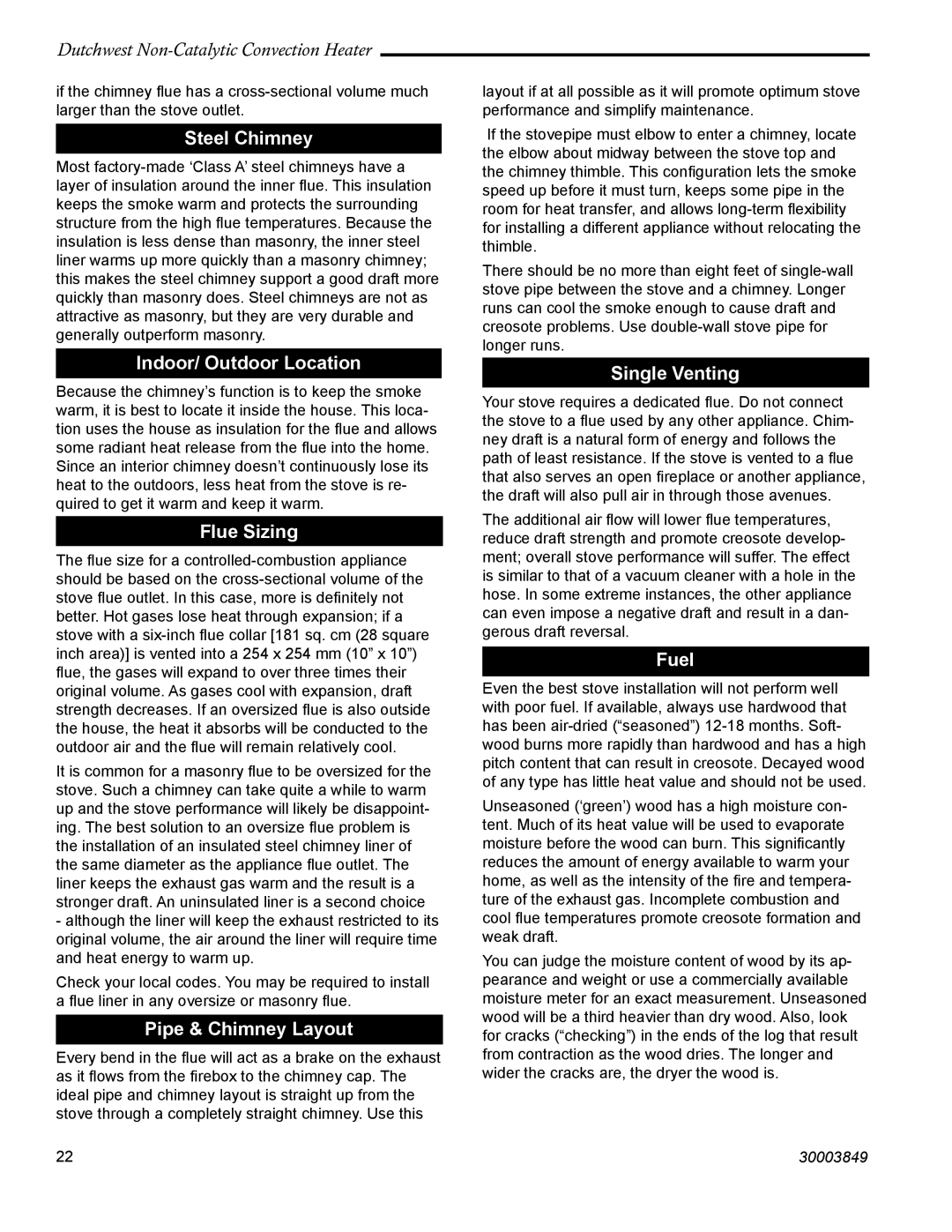
Dutchwest
if the chimney flue has a
Steel Chimney
Most
Indoor/ Outdoor Location
Because the chimney’s function is to keep the smoke warm, it is best to locate it inside the house. This loca- tion uses the house as insulation for the flue and allows some radiant heat release from the flue into the home. Since an interior chimney doesn’t continuously lose its heat to the outdoors, less heat from the stove is re- quired to get it warm and keep it warm.
Flue Sizing
The flue size for a
It is common for a masonry flue to be oversized for the stove. Such a chimney can take quite a while to warm up and the stove performance will likely be disappoint- ing. The best solution to an oversize flue problem is the installation of an insulated steel chimney liner of the same diameter as the appliance flue outlet. The liner keeps the exhaust gas warm and the result is a stronger draft. An uninsulated liner is a second choice
-although the liner will keep the exhaust restricted to its original volume, the air around the liner will require time and heat energy to warm up.
Check your local codes. You may be required to install a flue liner in any oversize or masonry flue.
Pipe & Chimney Layout
Every bend in the flue will act as a brake on the exhaust as it flows from the firebox to the chimney cap. The ideal pipe and chimney layout is straight up from the stove through a completely straight chimney. Use this
layout if at all possible as it will promote optimum stove performance and simplify maintenance.
If the stovepipe must elbow to enter a chimney, locate the elbow about midway between the stove top and the chimney thimble. This configuration lets the smoke speed up before it must turn, keeps some pipe in the room for heat transfer, and allows
There should be no more than eight feet of
Single Venting
Your stove requires a dedicated flue. Do not connect the stove to a flue used by any other appliance. Chim- ney draft is a natural form of energy and follows the path of least resistance. If the stove is vented to a flue that also serves an open fireplace or another appliance, the draft will also pull air in through those avenues.
The additional air flow will lower flue temperatures, reduce draft strength and promote creosote develop- ment; overall stove performance will suffer. The effect is similar to that of a vacuum cleaner with a hole in the hose. In some extreme instances, the other appliance can even impose a negative draft and result in a dan- gerous draft reversal.
Fuel
Even the best stove installation will not perform well with poor fuel. If available, always use hardwood that has been
Unseasoned (‘green’) wood has a high moisture con- tent. Much of its heat value will be used to evaporate moisture before the wood can burn. This significantly reduces the amount of energy available to warm your home, as well as the intensity of the fire and tempera- ture of the exhaust gas. Incomplete combustion and cool flue temperatures promote creosote formation and weak draft.
You can judge the moisture content of wood by its ap- pearance and weight or use a commercially available moisture meter for an exact measurement. Unseasoned wood will be a third heavier than dry wood. Also, look for cracks (“checking”) in the ends of the log that result from contraction as the wood dries. The longer and wider the cracks are, the dryer the wood is.
22 | 30003849 |
